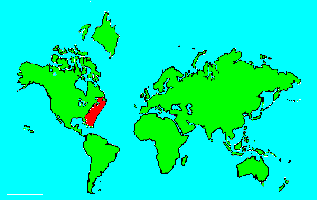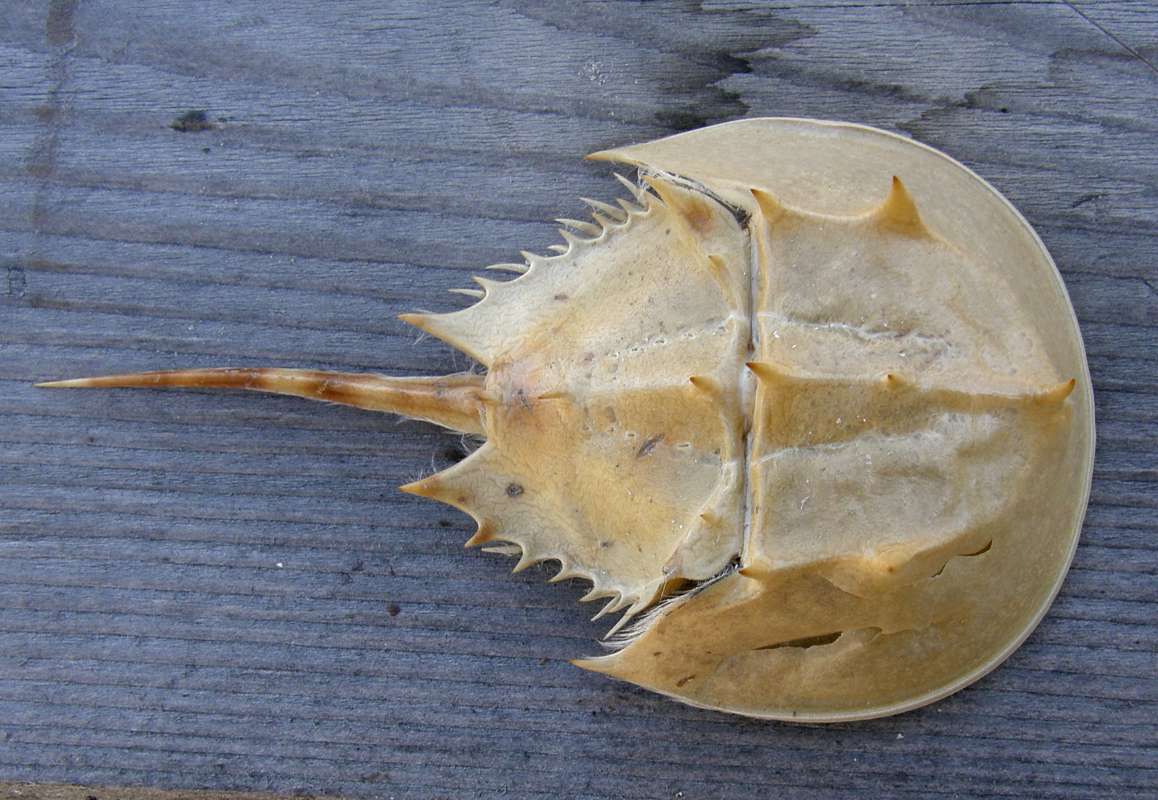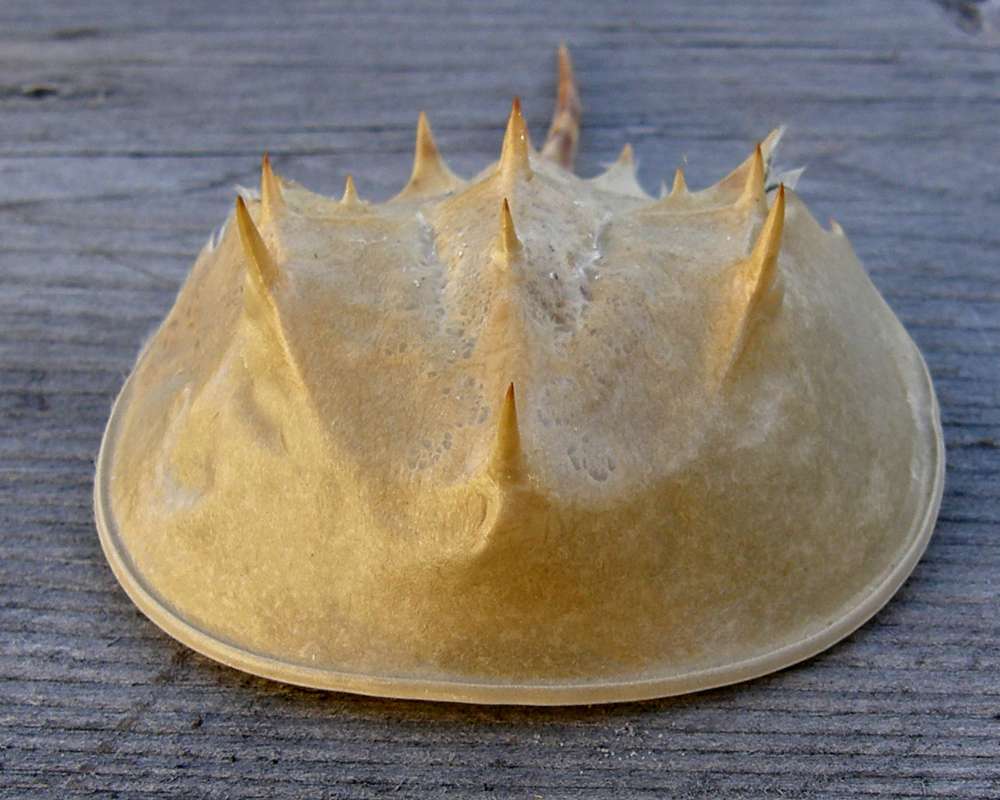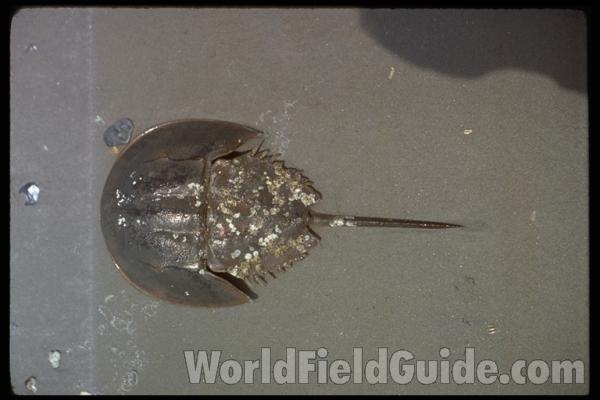SPECIES INFO
Horseshoe crabs (Limulus polyphemus) are unusual and ancient creatures that can be found in shallow sandy waters in the western Atlantic Ocean. Their dorsal side consists of a large protective shell that protects the fragile animal below.Horseshoe Crabs (Class Xiphosura or class Merostomata) are an ancient group of marine creatures that are probably more closely related to spiders than crustaceans. The genus Limulus was found as far back as the Triassic period. The only species found in the Atlantic Ocean is Limulus polyphemus, which is found from Maine to Texas, along the Mexican coast, and further south. Horseshoe crabs can be quite large; females reach two feet in length. Horseshoe Crabs crawl along sand bottoms, and are protected by their large dorsal shells.
Jointed Legged Animals (Phylum Arthropoda) make up the largest phylum. There are probably more than one million different species of arthropods known to science. It is also the most successful animal phylum in terms of the total number of living organisms.
Butterflies, beetles, grasshoppers, various insects, spiders, and crabs are well-known arthropods.
The phylum is usually broken into the following five main classes:
Arachnida: - Spiders and Scorpions
Crustacea: - Crabs and Crayfish
Chilopoda: - Centipedes
Diplopoda: - Millipedes
Insecta: - Insects
There are several other "rare" classes in the arthropods that should be mentioned. A more formal list is as follows:
Sub Phylum Chelicerata
C. Arachnida: - Spiders and scorpions
C. Pycnogonida: - Sea spiders (500 species)
C. Merostomata: - Mostly fossil species
Sub Phylum Mandibulata
C. Crustacea: - Crabs and crayfish
Myriapod Group
C. Chilopoda: - Centipedes
C. Diplopoda: - Millipedes
C. Pauropoda: - Tiny millipede-like
C. Symphyla: - Garden centipedes
Insect Group
C. Insecta: - Insects
The above list does not include some extinct classes of Arthropods such as the Trilobites.
Animal Kingdom contains numerous organisms that feed on other animals or plants. Included in the animal kingdom are the lower marine invertebrates such as sponges and corals, the jointed legged animals such as insects and spiders, and the backboned animals such as fish, amphibians, reptiles, birds, and mammals.






